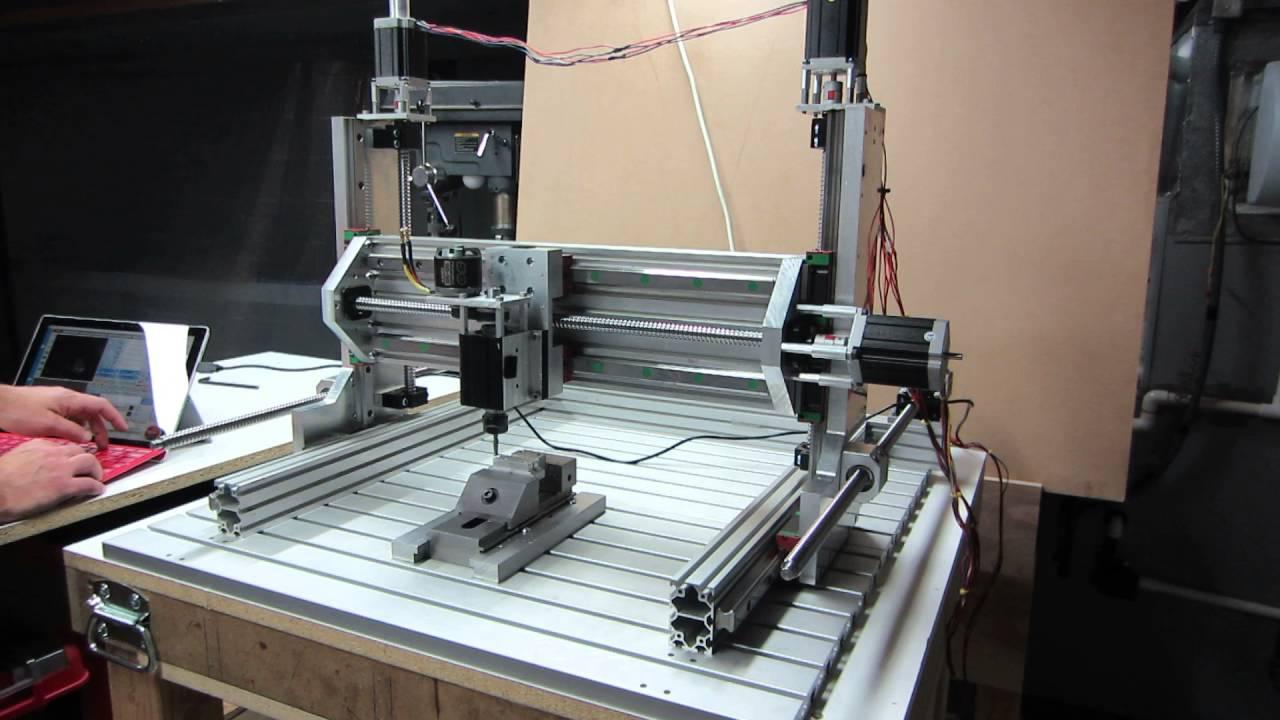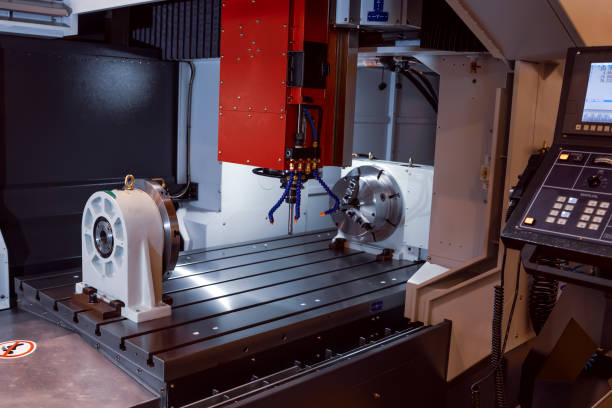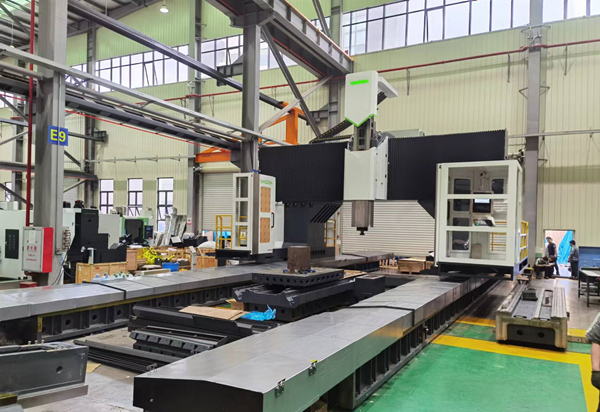Introduction
Computer Numerical Control (CNC) refers to the automated control of machining tools like routers, lathes, grinders, etc., using computers. CNC has revolutionized manufacturing technology by bringing highly accurate and programmable capabilities for machining parts and products.
Such machines as computer numerical controlled (CNC) routers are made use of in the cutting, drilling and shaping of woods, plastics,and glasses light metals, composites among other materials. They are important in industries such as aerospace, automotive construction furniture signage among others.
This detailed comparative guide examines the core differences between moving table and gantry CNC routers through various parameters. We will discuss key factors like mechanical design, cutting performance, accuracy, material compatibility, maintenance requirements, cost implications, and user-friendliness so that readers can better understand these two router designs. Let’s look into it.
Understanding CNC Designs
First off, understanding the key features of these two designs is vital to choose between a moving table and a gantry CNC router.
What is a CNC Moving Table Router?

A moving table CNC router comprises of a fixed gantry and a moving table. The stationary gantry is made up of one or more axes normally the z-axis that holds the spindle and cutter. Precision linear guides and drive systems are used to move the work piece under the stationary gantry, which delivers X-Y motion.
The prime benefit of this type of design is its exceptional static rigidity. It is possible to get an optimized force distribution across workpiece material with a stationary gantry. Also, there can be very high acceleration/deceleration rates as well as cutting speeds in use if a moving table platform is available. While machining, this means that the material remains stationary on the moving table while the head moves upwards along the Z-axis.
Due to their requirement for adequate space for movement across the workspace, moving-table CNC machines need larger installation areas than others do. They are ideal for handling large and heavy materials due to stable fixturing on the movable bed. Thus, industries such as aerospace, automotive, construction or ship-building dealing with big parts widely utilize them in their cutting and machining operations.
What is a Gantry CNC Router?
In gantry style CNC routers, the table is fixed and stable while the gantry moves along the X,Y and Z axes to put the cutting tool right above the work piece. The gantry comprises of a bridge like structure that extends over the entire working area, with motion on the table being driven by high precision linear or rack and pinion drives.
The table provides a rigid base for holding down work materials while they are cut using a gantry flying overhead. Gantry CNC machines take up less installation space making them ideal for small spaces. In wood, plastics, soft metal (eg aluminium) routing drilling milling applications etc.
Furniture making, musical instruments production, arts, jewelry design and sign writing among others employ such routers since they are compact regarding size thus being cost-effective and versatile. Enclosed gantry routers fitted with extra covers and seals help reduce vibrations during operation enhancing accuracy too.
Quick Comparison
Here is a quick comparison of the key differences between CNC moving table and gantry designs:
|
Parameter |
Moving Table |
Gantry |
|
Structure |
Stationary gantry, moving table |
Moving gantry, fixed table |
|
Rigidity |
Excellent, minimal vibration |
Moderate, may vibrate under load |
|
Precision |
Very high, even at high speeds |
Moderate, vibration affects accuracy |
|
Material suitability |
Hard materials like metals, composites |
Softer materials like wood, plastic |
|
Footprint |
Larger, needs space for table movement |
Compact, smaller footprint |
|
Cost |
More expensive |
Lower cost of ownership |
|
Ease of use |
Needs skilled operators |
Shorter learning curve |
Comparative Analysis
Having a basic understanding of moving table and gantry CNC routers, we can compare them in detail.

Structural Differences
The main difference between moving table and gantry routers is found in their mechanical structure and arrangement.
To lessen vibration, moving table CNC machines have very rigid and heavy-duty gantry constructions. It is achieved by using linear motion guides employing recirculating ball bearings or box ways to provide low friction smooth movement of tables. The table itself is made up of thick cast iron or welded steel that withstands cutting forces and dampens chatter.
On the other hand, gantry routers employ lighter bridges constructed from extruded aluminum or steel profiles that are designed to minimize weight as well as reduce cost. The X-axis movement in the work zone is provided by a movable carriage on which the gantry rests. This allows for Y-axis movement.
Gantry routers have smaller installation area compared to other types of CNC machines like bridge machines, but when engaged on heavy duty cutting projects they may vibrate due to the motion of the bridge hence affecting the precision slightly. In contrast to this, moving table routers do not experience vibrations because their gantries are stationary.
Design configurations are more flexible with Gantry machines compared to Moving Table ones. Size and layout optimization can be done using such options as cantilevered, enclosed or moving-gantry type, among others. Meanwhile, under gantry there is only one plane where a fixed layout describes motion taking place over a tabletop for these machine tools.
Performance Characteristics
The performance attributes of these two CNC router types are influenced by their structural differences.
High accuracy and repeatability are characteristics of moving table CNC machines. This is attributed to the fact that they have rigid gantries that do not allow for vibrations, thus allowing them to work at high cutting speeds and feeds with high levels of accuracy. Additionally, their fast cycle times are attributed to quick table movement.
Due to heavy-duty operations, gantry routers may vibrate a little causing reduced precision. However, for light duty applications they can match or surpass moving table precision and accuracy. Enclosed gantries and precision components help in reducing positional errors leading to good performance.
Moving table routers are designed for mass production activities where there is need for consistent quality and low tolerance machining. Gantry routers on the other hand are ideal for low to medium duty uses that don’t require extremely high level of precision.
Material Compatibility
The type of materials that can be effectively machined depends on the choice of CNC router design as well.
Some hard materials such as hard wood, composites, non-ferrous metals etc require a moving table CNC machine which has static rigidity and vibration dampening qualities that are enough for cutting them. The stationary bridge prevents any chatter when cutting thus making it one of the best choices.
Gantry routers may suffer from some chatter and inaccuracies when machining harder materials particularly if they have cantilever designs. They are good for softer materials such as plastics and woods and aluminum where vibrations are not critical in their manufacturing process. Enclosed gantries help in enhancing resonance damping thereby improving material compatibility.
There are more reasons why moving table CNC routers would be preferred over other machines especially when cutting thick or dense materials. Gantry machines suit lighter routing duties and milling tasks with wood, plastics and sheet metals.
Pros and Cons of Each Design
Now let us look at the specific advantages and limitations of moving table and gantry CNC routers.
Advantages of Moving Table CNC Routers
● Minimal vibration and excellent static rigidity make these machines suitable for heavy-duty cutting
● Even at high speeds, they can maintain their high precision as well as repeatability
● It is made with an even force distribution that helps in the machining of difficult materials without any chatter
● They are also good for use on large or heavy materials because they have stable fixturing
● Gantry components are more accessible for maintenance purposes
Disadvantages of Moving Table CNC Routers
● Table movement requires more installation space
● The size of the work envelope depends on the dimensions of the table
● More expensive than gantry routers
● Not suited to small machining requirements
Advantages of Gantry CNC Routers
● The compact footprint saves installation space
● Some examples include- cantilevered types, enclosed etc.
● Moving table ones tends to be cheaper
● These are ideal for small to medium sized pieces
● Less complex designs allow more do it yourself constructions
Disadvantages of Gantry CNC Routers
● Vibrations could affect accuracy when working with harder materials
● Heavy duty woodworking requiring tight tolerances will not work well here
● Moving the gantry adds complexity to maintenance issues
● Reduced stiffness or poor damping ability
Cost Comparison

Usually a consideration is the purchase cost when deciding between moving table and gantry CNC routers. Here are some comparisons.
Initial Investment
Moving-table CNC machines cost much more initially than gantry routers do. Such large-sized industrial grade machines are costly because they have a heavy gantry, precision linear guides, drive systems to move the table, vibration dampening features etc.
For lower volume production needs, Gantry Routers tend to be less expensive. In comparison to an equally sized moving table router, a cantilever gantry machine can cost considerably less. Enclosed gantries come at higher prices due to the additional enclosure, seals, and improved components.
In very high tolerance cutting and machining applications, the initial investment on moving table routers pays for itself in the long run. They offer good value for money as they can perform medium duty work with low precision, unlike their counterparts.
Long-Term Costs
On average though, moving table routers turn out cheaper in terms of overall costs incurred over time due to their solid construction and minimal maintenance requirements. The stationary gantry resolves the wear issues that occur as parts move hence reducing repair expenses.
However, it should be remembered that these types of bridges or carriages require more frequent servicing which leads to increased long term costs. Malfunctions are easily experienced by mobile parts with time since they become worn out faster than other components. Also replacement or repair of such items as linear guides rack and pinion systems etc., is more expensive on Gantry machines rather than simpler built moving tables.
Over many years of running businesses with high production volumes, lifetime costs remain lower compared with moving table CNC machines, even if they have higher initial purchase prices.
User Considerations
The difference between moving table and gantry CNC routers is also influenced by operator skills level, among others.
Skill Level and Experience
In order to maximize the benefits of operating a moving table CNC router, one must possess a person who has some experience in running CNC machines. These machines are aimed at being used by skilled users in manufacturing setups owing to their complex maintenance, extreme precision, and heavy industrial duties.
On the other hand, all you need is basic training on how to operate gantry routers which can be owned by both amateurs and experts alike. Moreover, they have lower costs of management hence small ventures such as schools or hobbyists who don’t have enough experience with computer numerical control can afford them. They also come with friendly user interfaces that make operations much easier.
Application Needs
It is necessary to consider specific application requirements before selecting between these two router designs.
For substantial cutting loads, high hourly production rates, big work pieces or low tolerance machining applications; stiff movable bed type CNC machines are highly suggested. Consequently; moving table routers are seen as ideal options since they provide stability and accuracy for such tasks that require high standard of performance.
Whereas cost-effective light to medium duty cutting may be required for smaller parts then gantry types offer a solution. Also they can be deployed where space for installation is very scarce because they flexibly fit into smaller areas.
Conclusion
Evaluation of rigidity, precision, speed, footprint, ease of use, and cost reveals that moving table and gantry CNC routers have different strengths. Industrial environments cannot find unmatched tools like the moving table routers for heavy duty precision machining applications. The gantry routers are an option for cost-sensitive light to medium duty work.
There is no superior CNC router design by definition. This therefore means that users must properly evaluate their specific machining needs in terms of workpiece size, materials used, precision required, production volumes and budget constraints. Thus knowing whether a moving table machine or a gantry router is most suited for their applications is determined by this analysis. Beginners should consult with professionals in order to avoid committing mistakes when purchasing CNC equipment.
Both moving table and gantry CNC routers provide unique benefits that make a difference in various manufacturing processes taking place around the world. Consequently, businesses optimize productivity and quality as well as maximizing return on investment through selecting the right design depending on their requirements.